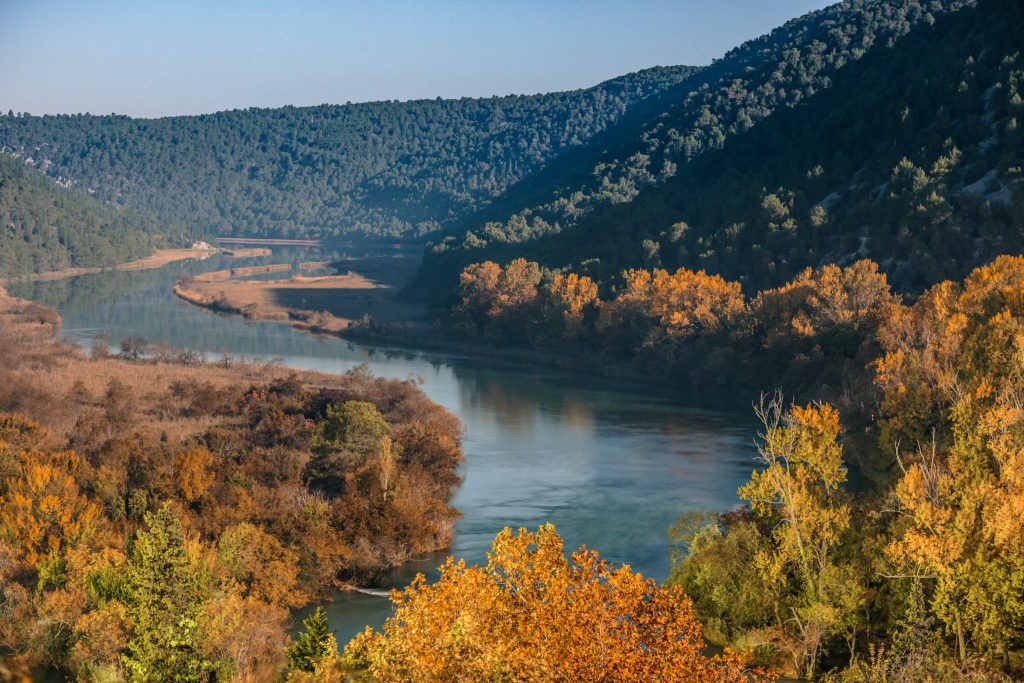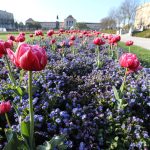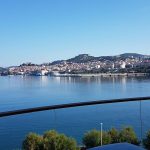Cetina and the Story of Mila
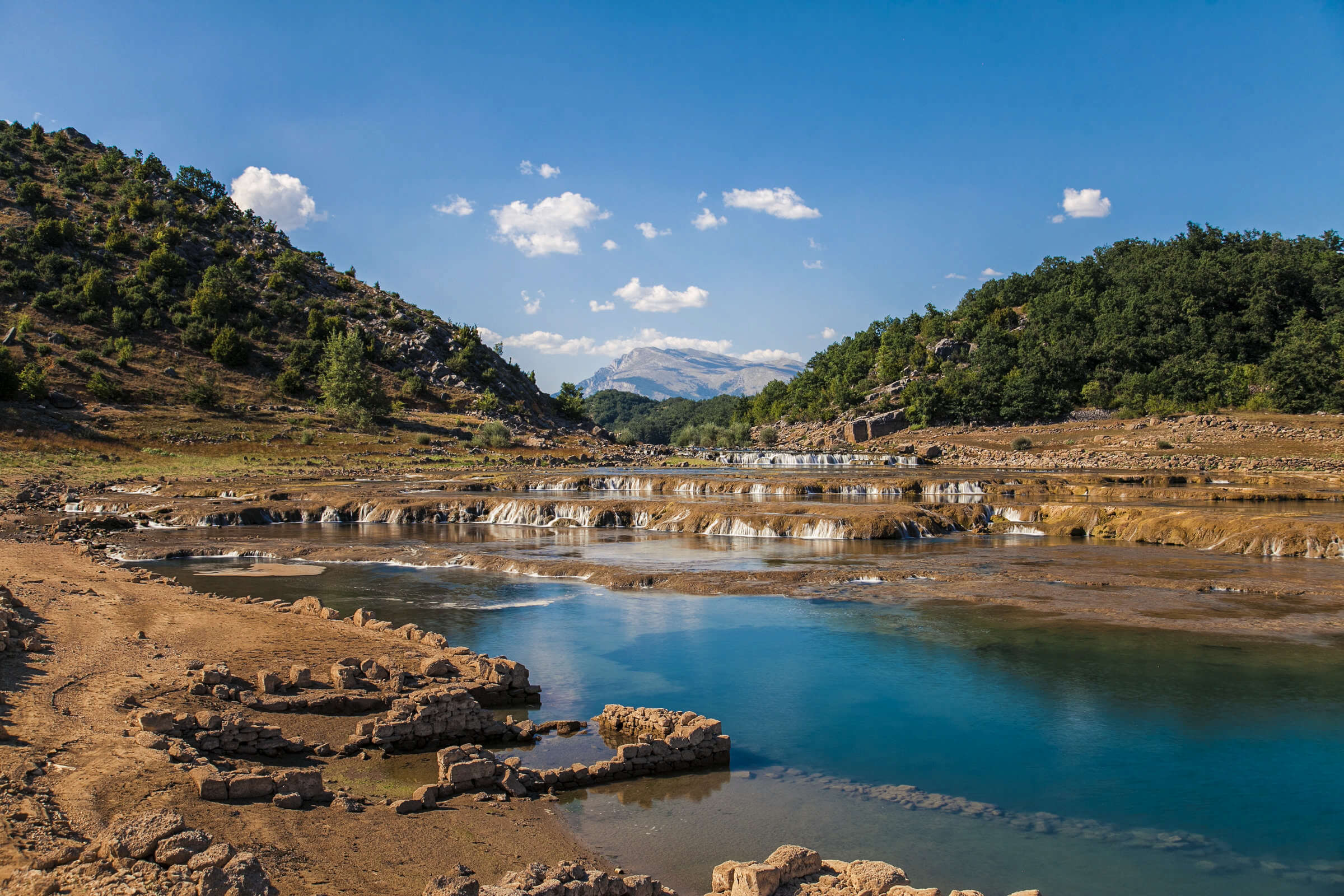 Photo credit: Mario Romulić
Photo credit: Mario Romulić
Gushing under two mountains, the Dinara and Gnjat, and passing through the scenic towns of Sinj, Trilj, Zadvarje, and Omiš where it finally meets the Adriatic Sea, the Cetina River is one of the most beautiful canyons in Croatia and is a famous day trip destination for both locals and tourists. Considered the longest river in Dalmatia with its length of 101km, Cetina is a perfect place for canyoning, zip-lining, freshwater kayaking, and white water rafting. The clear blue water of the Cetina River has been a generous source of clean water and freshwater fish for the people of Dalmatia over the centuries. Thanks to the nymph named Cetina, this beautiful river came to life. According to legend, Cetina desperately dreamed of conceiving a child and was tricked by the sexually ravenous God, Zeus, who promised to bore her an offspring after their union. After many weeks of waiting, Cetina did not get pregnant and upon realizing Zeus’ trickery, the heartbroken nymph wept endlessly until her tears formed a river and eventually, the Cetina dried up and turned into stone. The Neolithic people believed that a person who wishes to conceive will be blessed with a baby of good fortune after bathing in the tears of the late demigoddess. There is also another story in Cetina that is historically significant to Croatian people. It is the story of a brave and clever woman who single-handedly defeated a whole Ottoman army – Mila Gojsalić.
In 1530, Ahmed Pasha led a powerful Ottoman army to conquer the Republic of Poljica, now known as the modern-day Omiš. The army terrorised, pillaged, and ravaged the people of this place for a long time, but just before their final attack and Poljica’s fall, a young beautiful woman named Mila Gojsalić appeared before the army. According to stories, Mila was very beautiful and her charm easily bewitched Ahmed Pasha who fell right under her spell. Mila pretended to be in love with the leader of the Ottoman army and she ended up sleeping in the leader’s tent. That evening, Mila sacrificed her chastity and life for her people. After making sure that Ahmed and his men were asleep, she snuck into the gunpowder storage with a torch and blew up the whole military camp. The powerful blast killed Ahmed Pasha and most of the Ottoman warriors, including the beloved heroine of Poljica. Although some stories claimed that Mila escaped the camp and plunged from the high cliffs down to her death in the river of Cetina.
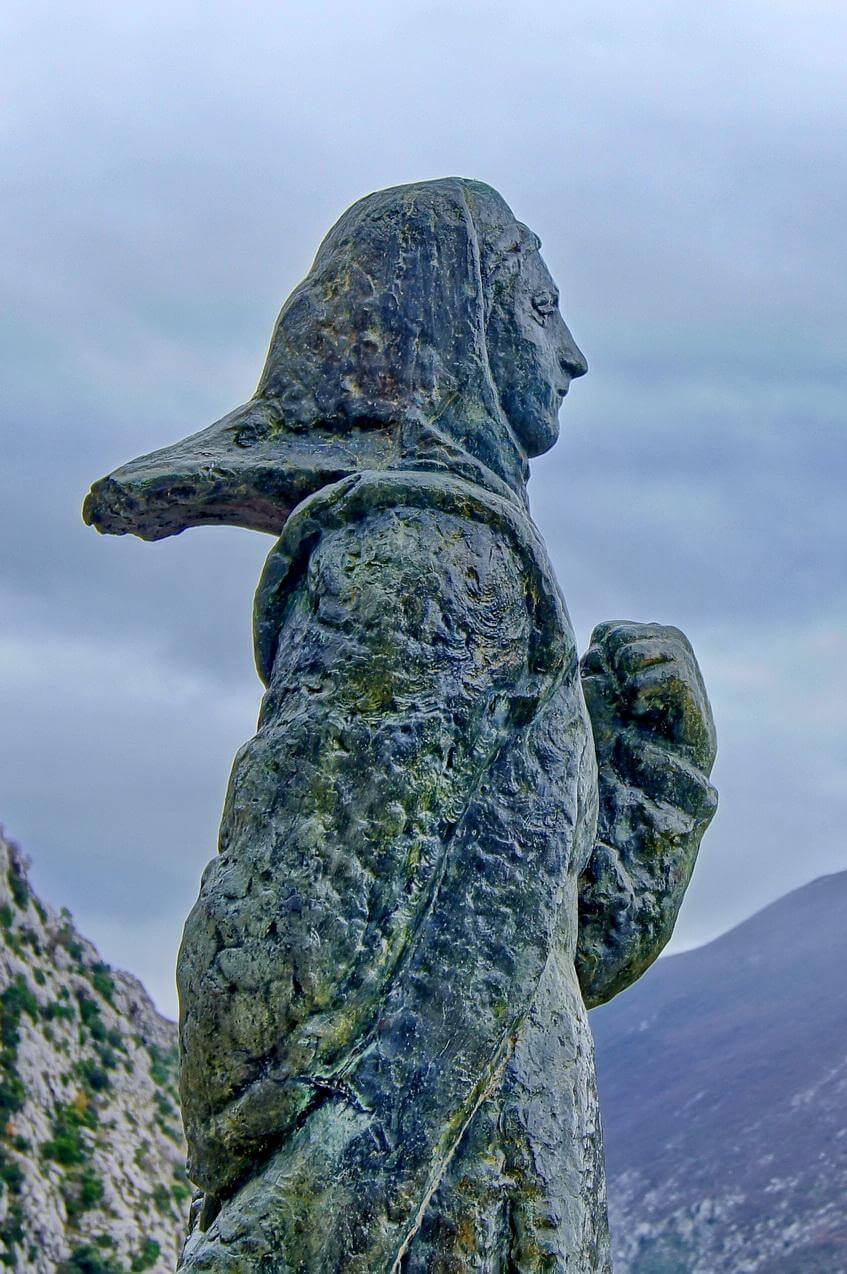 Photo credit: By Ivan T. – Own work, CC BY-SA 3.0, https://commons.wikimedia.org/w/index.php?curid=17699310
Photo credit: By Ivan T. – Own work, CC BY-SA 3.0, https://commons.wikimedia.org/w/index.php?curid=17699310
The heroic act of Mila ignited courage from the people of Poljica who began to fought back until every single one of the Ottoman invaders was dead. To honor Mila’s sacrifice and bravery, the greatest Croatian sculptor Ivan Meštrović created a statue of her. In the village of Gata, overlooking Cetina and Omiš stands the statue of Mila Gojsalić – a heroine who watches over the people of Omiš day in and day out.
Plitvice Lakes and The Black Queen
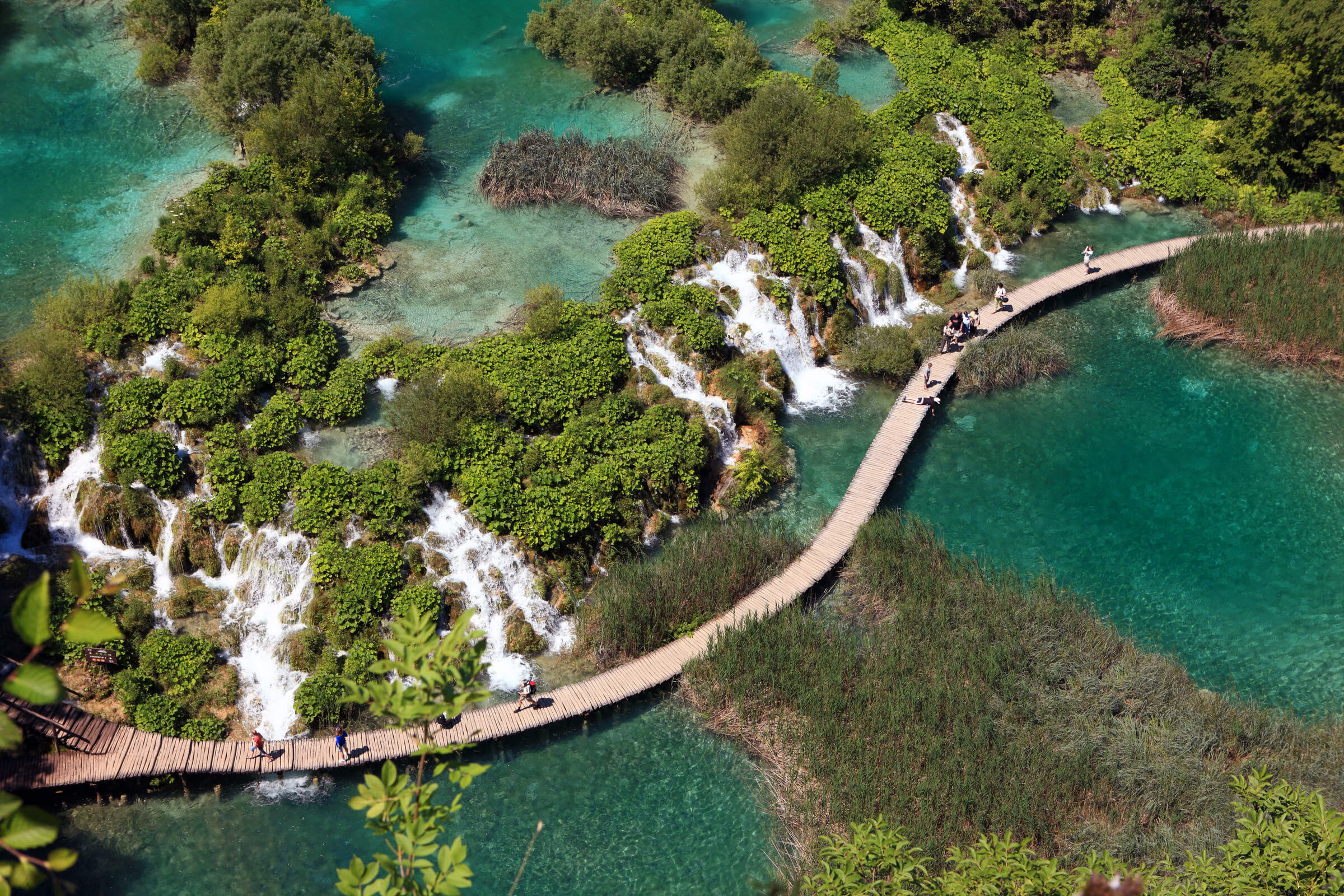 Photo credit: Mario Romulić
Photo credit: Mario Romulić
The Plitvice Lakes National Park is probably the most famous national park in Croatia. Millions of tourists flock to visit this magnificent landscape that is consisted of 16 crystal shades of blue and emerald lakes which are connected by many rivers, streams, caves, and waterfalls and are surrounded by luscious green woodland. This incredible scenery was created by the endless stream of waters that have been flowing over limestones and chalks for thousands of years, until eventually forming natural dams through deposits of travertine barriers. All thanks to nature’s wonderful phenomenon, a series of 16 beautiful lakes came to life!
But Croatian folklore, on the other hand, believes that Plitvice Lakes appear magical because it was, indeed, magical. Legend has it that a long time ago, the area of Plitvice only had one source of water – the Black River (Crna Rijeka). Unfortunately, the area was struck with a long-lasting horrible drought which dried out the Black River, and the crops, livestock, and people began dying. In despair, the people prayed and cried all day to the heavens for some rain, but for a very long time, their prayers were left unanswered. They were close to giving up when the Black Queen, who had just left her fairy palace to head to an area near Plitvice, happened to hear their pleas. After witnessing the damage of the drought to the people, the Black Queen said, “I am sad to see that you are suffering!” After that, the winds and thunder started to roar and strong rain came and poured for days and days on end until the Black River overflowed and 13 lakes appeared. People believed that the Black Queen cried for the people’s misfortunes and her black and white tears formed the Black River and the White River in Plitvice. Together with the Matica River, they form the first lake and it was named Prošćansko (prošnja = prayer), to commemorate the prayers of the anguished people. For their token of gratitude to the Black Queen, the people of Plitvice built her a castle on the hill above lake Kozjak, where she can admire the splendour of her own creation.
Imotski’s Red and Blue Lakes and The Wicked Gavan Family
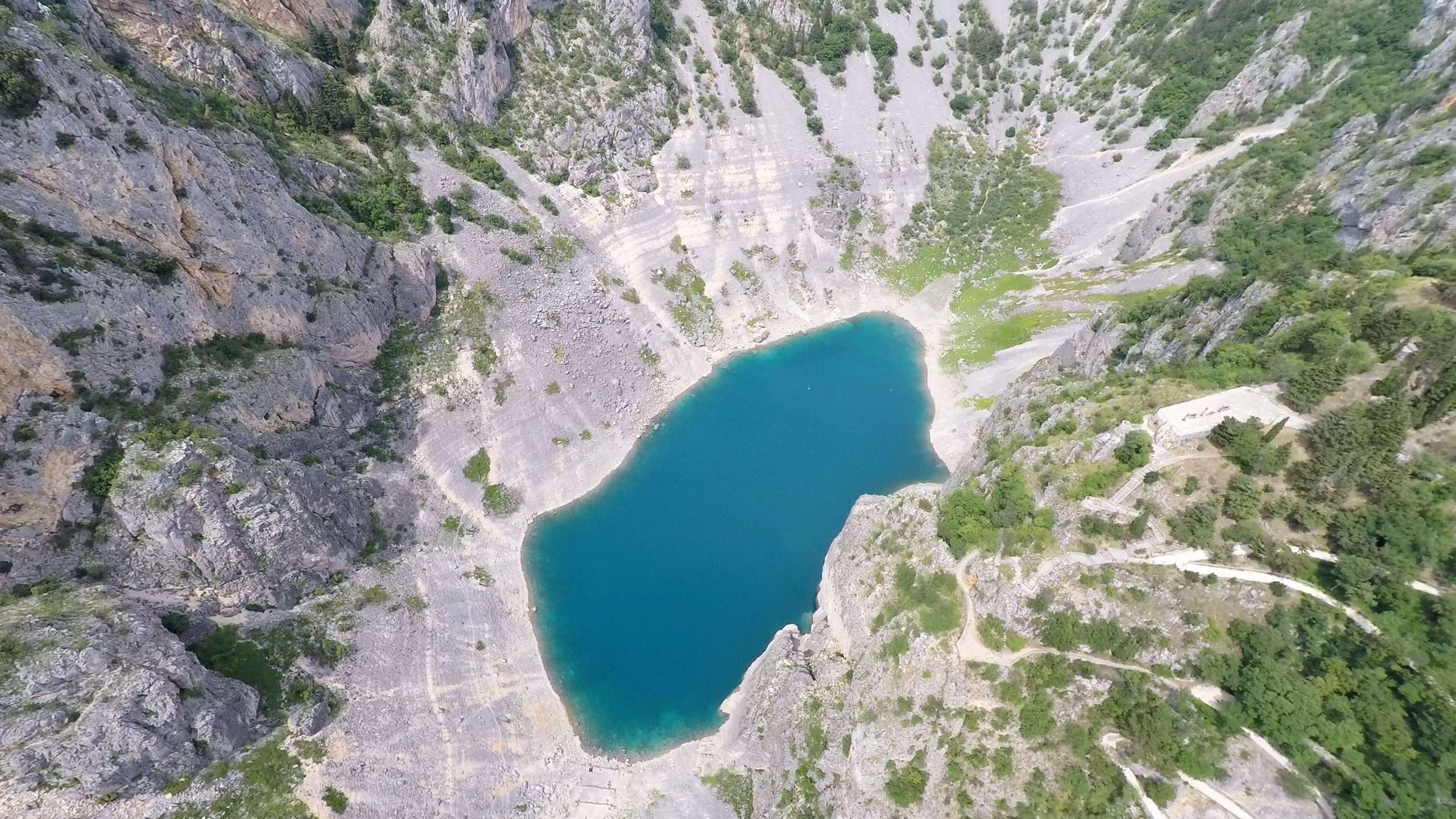 Photo credit: By Yacht Rent from Croatia – modro jezero Croatia, CC BY 2.0, https://commons.wikimedia.org/w/index.php?curid=81974343
Photo credit: By Yacht Rent from Croatia – modro jezero Croatia, CC BY 2.0, https://commons.wikimedia.org/w/index.php?curid=81974343
A small town that is perfect for travellers who wish to steer away from the frenzy of tourists, Imotski is Dalmatia’s hidden gem packed with nature, culture, history, and friendly locals. Unlike the busy coastal cities of Dubrovnik and Split, Imotski possesses a different charm – tucked in the inland region of Dalmatia without the Adriatic Sea, this town, instead, offers an array of unique and breath-taking landscapes to its visitors. Imotski is rigged with incredible karst formations such as hidden caves, sinkholes, karst rivers, lakes, and canyons. The distinctive geographical formations of Imotski inspired countless folk tales including fairies, heroines, and goblins. Perhaps the most famous of these intriguing formations are the Red and Blue Lakes, two magnificent karst lake formations which, according to Croatian folklore, have emerged to swallow the palace and wealth of the wicked Gavan family.
Named after the reddish color of the surrounding cliffs, the Red Lake is a beautiful karst lake and the third largest sinkhole in the world. It can’t be reached on foot and without special equipment. Meanwhile, the Blue Lake is easily accessible and is located just beneath the historical Topana Fortress in Imotski. Locals and tourists are welcome to swim in the calm, turquoise blue water of the lake. The stunning and serene blue lake, however, hides a story of the evil Gavan family who used to live in the area of Imotski. According to folklore, Gavan with his wife, Gavanica, and their children, were the wealthiest and most powerful family in Imotski. Nonetheless, the Gavan family was known to be very cruel and vile towards their servants and neighbours and the only thing that mattered to them was their wealth. An angel heard about Gavan’s horrific acts and decided to descend down from heaven to test the Gavan family. The angel disguised as a beggar and knocked on the Gavan’s palace door to ask for help. Gavanica opened the door and refused to provide any help to the beggar. The angel then asked Gavanica, “Are you not afraid of God’s punishment?” The arrogant woman replied, “What good can God do for me when I have my Gavan?” It was then that the angel revealed his disguise and punished the Gavan family. It was believed that the ground where the Gavan’s palace stood cracked open and swallowed the Gavans and their entire wealth. The locals still believe that the deep hole, now covered by the Red and Blue Lakes, still contain the palace and wealth of the family and on windy days when the bora wind blows, the screams of Gavan and Gavanica can still be heard around the area of these lakes. The locals also claim that beautiful fairies who live in the Fairy Cave in the Blue Lake have been sighted basking in the beauty of the lake at sunset and dawn. There is a current rumor that no human has ever managed to set foot on the Fairy Cave.
Stories of fairies and foes aside, the Blue Lake transforms into a spectacular football field every few years when it dries up. Many people flock to Imotski to witness these rare and out-of-this-world football matches on Imotski’s mysterious lakebed.
Krka National Park and The Tragic Love Story of Bogdan and Miljeva
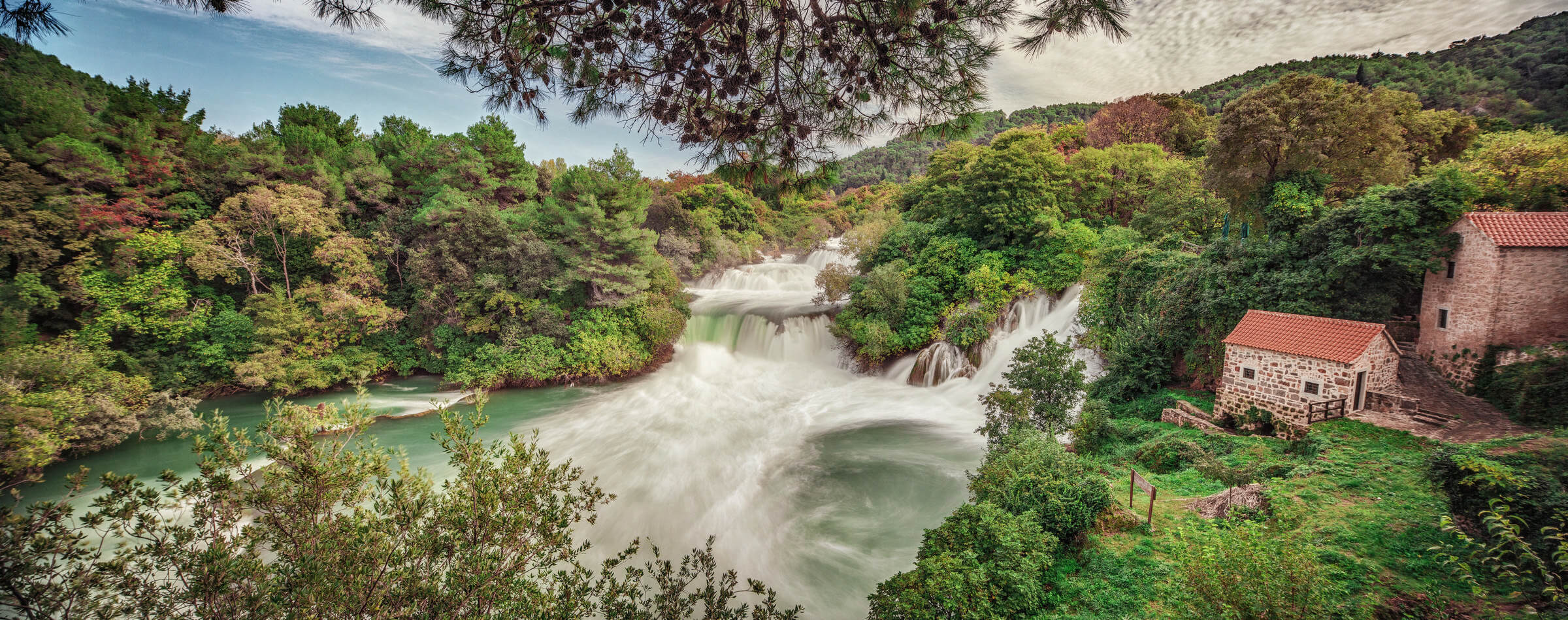 Photo credit: Mario Romulić
Photo credit: Mario Romulić
One of the most visited national parks in Croatia, Krka National Park has it all – the iconic Skradinski Buk waterfall, Neolithic cave, Roman architecture remains, Krka Monastery and so much more! It is also very accessible especially if you are coming from the coastal cities of Split and Šibenik. The park which is filled with dazzling waterfalls, gorges, and the 73km-long Krka river that gushes through a karstic canyon of 200m deep are intertwined by walking paths, hiking trails, and wooden bridges. The park has five main entrances: Skradin, Lozovac, Roški Slap, Krka Monastery, and Burnum, and all are accessible by car. But before becoming Dalmatia’s most famous tourist attraction, Krka National Park is built from the tragic love story of Bogdan and Miljeva.
A long time ago, the mighty Prince Bogoje lived in the area of Krka. In Bogočin, he built a beautiful palace for his son, Bogdan, who was set to marry a lovely noblewoman who lives in the town of Ključ across the river Čikola. That woman’s name was Miljeva and she was the daughter of influential Ban Domagoj and his wife Čika. Bogdan and Miljeva were cherished by the townspeople and on their wedding day, a large gathering of seven bans and twelve county prefects have gathered in Bogočin to witness the union of the beloved couple. The wedding was a success and everyone headed to the palace to celebrate the newlyweds where a tragic fate awaited the couple. During the celebration, a terrifying dragon descended into the party and dragged Princess Miljeva to the bottom of Lake Brljan. Prince Bogdan came to rescue his bride but the beast drew him to the river of Krka as well. This tragedy broke the heart of Prince Bogoje who used up all his wealth to grieve the loss of his son and Miljeva. With his riches, he built Aranđelovac monastery, a place to pray for the souls of the lovers. He also built the towns of Čučevo and Nečven to symbolize the love between Bogdan and Miljeva. In addition, he built two bridges which connect Roški waterfall and river Miljacka. Local folks believed that anyone who wishes to cross the bridges has to shed two tears to pay homage to the tragic fate of Bogdan and Miljeva’s love. In the end, Prince Bogoje tore down the Bogočin palace and set off from this grief-stricken town into the unknown. Meanwhile, Miljeva’s mother, Čika, secluded herself to pray for the late lovers in a tower she built in Ključ.
Because of this tragic love story, Bogočin is known by the locals as a “fairy town”, the river near Ključ is named Čikola and the area between Bogočin and Ključ is called Miljevci.
For more on Croatia’s top travel destinations, follow Total Croatia.
For more on travel, follow TCN’s dedicated page.
For more about Croatia, CLICK HERE.

